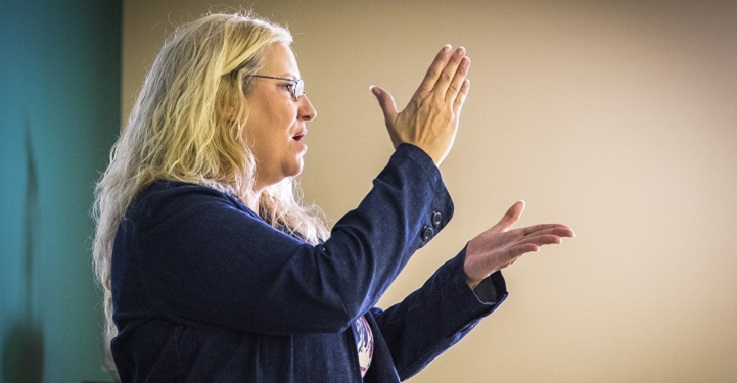ASL career spotlight: Deaf advocacy – Part 2
 According to the World Federation of the Deaf (WFD), 80 percent of the world’s 70 million Deaf people do not have access to education. Less than two percent of Deaf children have access to learning sign language, with the most limited access in developing countries.
According to the World Federation of the Deaf (WFD), 80 percent of the world’s 70 million Deaf people do not have access to education. Less than two percent of Deaf children have access to learning sign language, with the most limited access in developing countries.
“The rights of Deaf people are often overlooked, especially in developing countries.” the WFD says, “Societal prejudices and barriers prevent Deaf people from enjoying full human rights; for Deaf people the major barrier is lack of recognition, acceptance and use of sign language in all areas of life as well as lack of respect for Deaf people’s cultural and linguistic identity.”
Data like these are why women like Claudia Gordon, the first ever Deaf African-American female attorney in the United States became a lawyer.
Gordon works at the Office of Federal Contract Compliance Programs, and previously served as a policy adviser for the Department of Homeland Security. When she lost her hearing at age 8, Gordon moved with her mother from Jamaica, where access to education was very expensive, to New York to attend a school for the Deaf and learn sign language for the first time.
In an article for the BBC News last week, Gordon said that the discrimination she experienced in Jamaica caused her to “recognize injustice that exists in society towards
people who happen to be different — Deaf, blind, physically disabled or have a mental disability.”
“I realized then that society does not treat people right, including myself. So from that experience I realized I wanted to be able to make change, make things better for people like myself,” said Gordon.
The article also profiles Leah Katz-Hernandez, informally known as ROTUS — the Receptionist of the United States — and the first Deaf person to hold this position.
Katz-Hernandez is who visitors first encounter when they enter the White House. She oversees the White House guest book, the West Wing’s main meeting space, the Roosevelt Room, and more. Her hope is to see more people like she and Gordon working with the government “because it has a vital impact on the lives of Deaf people.”
ASL Interpretation Studies and ASL Studies students at William Woods University both take courses in Deaf culture that address various barriers to education Deaf and hard of hearing people have faced throughout history and still face today. As is the nature of the importance of accessibility, it is an issue often discussed in nearly every ASL course students take.
Last month, Look into ASL mentioned various topics and groups ASL bachelor’s degree students can pursue in advocacy, and access to education and sign language learning is one of them.

